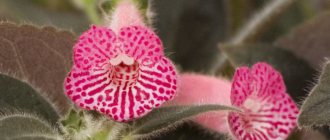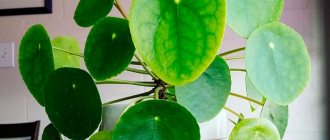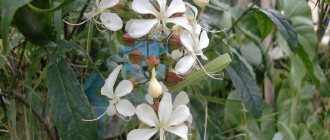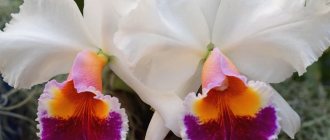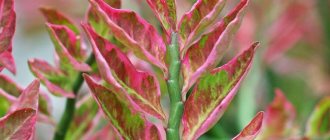Spathiphyllum was first discovered and described by the German botanist and enthusiast Gustav Wallis back in the 19th century.
The plants that attracted the attention of the scientist are still common in Colombia and other countries in the region. Many spathiphyllums can be seen along the swampy shores of reservoirs, in the undergrowth of tropical rainforests. The plant, which came to the USA and Europe, attracted the attention of flower growers. As an indoor plant, spathiphyllum has become well known throughout the world. But breeding work to develop new varieties and hybrids began relatively recently, only in the mid-60s of the last century.
The appearance of plants suitable for growing indoors:
- dwarf and impressive sizes;
- with leaves of various shapes and colors;
- having a pleasant smell;
- capable of blooming for a long time and almost constantly, caused a serious increase in interest in the culture.
Today, amateur flower growers have dozens of varieties of spathiphyllum at their disposal, photos of which allow them to constantly be amazed at the diversity of nature.
Types of spathiphyllum
Many novice flower growers believe that drimiopsis is a type of spathiphyllum. But these are two completely different plants. Depending on the size, growth characteristics and appearance, several varieties of flowers are distinguished.
profusely blooming
It got its name due to its abundant and long flowering, for which it gained popularity among flower growers.
With proper care, the plant blooms almost all year round.
Cannofolia
In the wild, it is most common in Thailand and Venezuela. The leaves are ovoid in shape and have a fairly rich green color.
The plant is famous for its fragrant aroma. The green-yellow cob is surrounded by green-white leaves.
Charming
It differs from other species in its large matte leaves, reaching a length of 25 cm and a width of 10 cm. They are very pleasant to the touch. The flower is greenish in color. After it withers, even more chloroplasts are formed in the “blanket”.
Spoon-shaped
Found in the wild in Brazil. The bush can grow up to 1 meter in length and is very thermophilic. The dark green leaves are shiny, in appearance they resemble a spoon, as they are slightly elongated and are distinguished by the presence of a wavy edge.
The petiole grows up to 70 cm. The cob is covered with a long oval-shaped blanket. The flowers are snow-white. The plant has a long flowering period.
Wallis
In Russia, this type of “female happiness” came from the tropical forests of Colombia. Grows up to 30 cm in length. The foliage is dark green in color and oblong in shape.
The blanket that wraps the cob is much longer than it. Spathiphyllum Wallis is excellent for growing at home and, with proper care, blooms for a long time.
Heliconifolia
Loves moist soil and in nature prefers tropical rainforests. Found in Brazil. The plant grows up to 1 meter in height.
The leaves are elongated, shiny, up to 25 cm wide, and reach half a meter in length. The foliage has a wavy edge. The inflorescence is very small and does not exceed 10 cm in height and has a color similar to that of the petiole. This species is excellent for home growing.
What types of groups are there?
- Unusual.
Unusuality can be expressed in the shape and color of the leaf:- Spathiphyllum Silver Rain dwarf.
Spathiphyllum Domino.
- Easy to care for.
Beginners in growing spathiphyllums should pay attention to easy-to-care varieties:- Spathiphyllum Angel Baby.
Spathiphyllum Spilt Milk.
- Spathiphyllum Mauna Loa.
- Spathiphyllum Wallisii.
- Expensive.
Expensive varieties of spathiphyllum include rare, unusual, and large species:- Spathiphyllum cochlearispathum Sanny Sails yellow.
Spathiphyllum cochlearispathum Sanny Sails white.
- Spathiphyllum Deli.
- Spathiphyllum Sensation.
- The most difficult to care for.
Among their unpretentious brothers there are species that require increased attention to air and soil humidity and lighting:- Spathiphyllum cochlearispathum.
Spathiphyllum floribundum.
- Spathiphyllum floribundum mini.
- Spathiphyllum Picasso.
- Rare.
- Spathiphyllum Lemon Glow.
- Spathiphyllum New One.
- Large.
The largest spathiphyllums have impressive sizes: they form bushes up to 1.5 m high, up to 2 m wide, leaf sizes reach a length of up to 80 cm, a width of up to 40 cm.- Spathiphyllum cochlearispathum.
Spathiphyllum Sensation.
Inflorescence colors
Spathiphyllum has many types and varieties. Many believe that the inflorescence of a flower can be not only white, but also pink, red, green or yellow. But that's not true. The red flower has an anthurium that looks like “female happiness.”
Coloring the inflorescence in different colors is only possible artificially using special dyes. In nature, spathiphyllum is only white. At different flowering periods, some varieties exhibit a light cream or greenish color.
Detailed characteristics and appearance
Spathiphyllum picasso is a perennial evergreen plant that belongs to the Araceae family. The species is native to Central and South America; the plant is also found in Brazil and the Philippines.
The most optimal habitat is the humid climate of swampy forests, along the banks of rivers and lakes.
What it looks like: description and photo
Picasso is a hybrid variety that was bred in the Netherlands. It reaches a height of 45-50 cm. The stem is completely absent, the leaf blades grow directly from the root, forming a basal rosette.
The leaves are fat, with a characteristic shine, reaching a width of 20-25 cm. The density of the plates is average, they taper at the ends. The color of the leaves is heterogeneous - rich green intertwined with white patches. The cuttings are long and bend well. The color is distinguished by its sail-like shape. The color of the bud is white with a delicate green splash. At the base the flower has a slight yellow tint. The roots are short.
Below you will see a photo of the flower:
How is it different from other types?
The main distinguishing feature of Picasso is the extraordinary coloring of flowers, in which light green is intertwined with white. Indoor plants grow spreadingly and are not particularly demanding to care for.
The decorative nature and unpretentiousness of spathiphyllum make this plant indispensable for landscaping offices, apartments, and winter gardens. In our articles you will find photos and descriptions of all types and varieties of flowers: Silver Cupido, Chopin, Domino, Sweet Chico, Alana, Sensation, Strauss, Wallis and red.
Conditions for keeping spathiphyllum at home
In order for a flower to please with abundant and long-lasting flowering and gorgeous foliage, it is necessary to observe special conditions for its maintenance. It’s not difficult at all, the main thing is to take into account all the tips and recommendations and choose the most suitable place.
Temperature
In summer, a temperature of 20 to 27 degrees is suitable for him. This way the plant grows well and receives the necessary amount of heat. When the temperature in the room is above 30 degrees, it is not worth keeping the flower there for a long time.
In winter, spathiphyllum tolerates temperatures of 16 degrees. But it is not advisable to keep it on a windowsill where it is drafty. The plant is afraid of drafts.
Humidity indicators
In the wild, spathiphyllum grows in tropical rainforests and in areas near swamps. Therefore, it is important for the plant to provide a normal level of humidity. With a lack of water, flowering will be poor and the leaves will dry out.
“Women's happiness” loves to be sprayed. It is important to ensure that drops of water do not fall on the flower itself. But it is important not to overdo it, as constant humidity will lead to rotting of the roots.
Lighting
Spathiphyllum is afraid of direct sunlight. At the same time he loves light. The thing is that ultraviolet light burns the leaves.
Many varieties are able to grow normally in a shaded place. But insufficient light will cause the color of the leaves to become dull, and the leaf itself will stretch and change its shape.
Where to keep
Spathiphyllum will grow well in almost any corner of the house. But it should not be placed on a windowsill where there are drafts. Then the plant will constantly get sick, grow poorly and may die.
The ideal place for “female happiness” would be a well-lit area of the apartment. In winter, a window facing south is suitable, and in summer – facing north. Important to remember. That spathiphyllum does not tolerate sudden climate changes, so its location should be changed as rarely as possible.
Briefly about cultivation
- Flowering: from April to July.
- Lighting: bright sunlight.
- Temperature: in spring and summer – about 22 ºC, but not lower than 18 ºC, and in winter – 16-18 ºC, but not lower than 10 ºC.
- Watering: during the growing season - as soon as the substrate in the pot dries out by 1-15 cm, in winter watering is reduced, but the earthen clod is not allowed to dry out completely.
- Humidity: high. The plant should be kept on a tray with wet expanded clay and sprayed regularly, but from the moment the buds appear, you need to make sure that drops of water do not fall on them.
- Feeding: during the period of active growth - once a week with mullein solution or complex mineral fertilizer in half the dosage. In winter, spathiphyllum is fed once a month.
- Dormant period: from October to January.
- Transplantation: in the spring, as soon as the roots fill the space of the pot.
- Substrate: peat, humus, river sand, deciduous and turf soil in equal proportions.
- Reproduction: by cuttings and dividing the bush.
- Pests: mealybugs, spider mites and aphids.
- Diseases: the leaves of the plant lose their decorative appearance in conditions of low air humidity, and yellow-brown spots appear on them due to excess moisture in the soil. The plant also suffers from a lack and excess of nutrients.
Read more about growing spathiphyllum below.
Caring for spathiphyllum at home
Caring for spathiphyllum at home is not difficult. He needs to be provided with all the necessary conditions, such as soil, a pot, and proper watering.
Priming
“Women's Happiness” loves loose soil that easily allows air and water to pass through. To prepare the soil yourself, you will need to mix:
- Turf soil - 2 parts.
- Humus - 0.5 parts.
- Leaf soil - 2 parts.
- Peat – 1 part.
- River sand – 1 part.
For spathiphyllum, you can purchase ready-made soil. A substrate for aroids is suitable for it. It is recommended to add a small amount of charcoal to it. This will make the soil looser.
Tara
The plant really likes close quarters. Therefore, you should not choose a wide pot. If you plant a flower where there is a lot of space, it will not bloom for a long time. Therefore, before replanting, it is better to choose a pot that is slightly larger than before.
The material from which the container for the plant will be made is not particularly important. But it is recommended to opt for ceramics or a small wooden tub, especially for the Sensation variety.
Watering
The plant needs to be irrigated all year round. In summer, autumn and spring, watering should be more abundant than in winter. Water must be left standing before use. If liquid has accumulated in the pan, it must be drained to prevent the roots from rotting.
The water temperature should be between 18-23 degrees. Watering is carried out when the top layer of soil in the pot is dry. But it is best to water the plant by pouring water into the pan.
Fertilizer (feeding)
For good growth and abundant flowering, the plant needs to be fed regularly, since it does not receive enough nutrients from water and soil. During the flowering period, fertilizers are applied twice a week, and in winter - once a month. Organic matter is used as fertilizer. A solution of bird droppings works well. You can also purchase special complex fertilizers in special stores.
Trimming
In order for the plant to feel good, grow and bloom well, it must be pruned. Remove dry and diseased leaves. They are trimmed with scissors or special pruners as needed.
Zinnia from Seeds: 5 Helpful Growing Tips
Transfer
The flower is replanted in the spring. Choose a pot slightly larger than the previous one. Replanting is carried out annually in the first five years, then as needed, when root shoots begin to creep through the drainage.
If the bush does not exceed 40 cm in height and the diameter of the pot is 20 cm, then only the top layer of soil can be replaced.
Before the procedure, the soil must be well moistened and the side shoots must be cut off. Place a drainage layer on the bottom of the new pot, about 5 cm of new moistened soil. Transplantation is carried out using the transshipment method. This way the plant will be less stressed. The plant is not watered for the first 3 days. Just spraying is enough.
Rejuvenation
When spathiphyllum needs to be rejuvenated, a simple transplant is not enough. To do this you need:
- Prepare the pots.
- Carefully dig up the flower.
- Divide the curtain into several parts.
- Remove all old leaves and rotten roots.
- Disinfect the roots and dry them slightly.
- Plant full-fledged plants directly into the soil, having first poured a drainage layer into the pot.
Rhizomes that are left without rosettes can be planted in a small but wide pot and covered with film. This will create a greenhouse effect.
In autumn and dormant season
In autumn, when the flowers have faded, they are carefully removed. This is necessary so that they do not take away nutrients and water.
In winter, spathiphyllum moves from the flowering stage to the growth phase. Therefore, it needs good lighting. In winter, it is better to place it on a window facing south. It is recommended to provide additional lighting. This can be done by installing a special phytolamp. It is fixed so that the angle of inclination is about 70 degrees.
For a plant, the normal ambient temperature is 18-20 degrees. But it is important that the flower does not stand in a draft. Watering is reduced in winter and showers are completely eliminated. But if the apartment is hot, the leaves are sprayed with a spray bottle.
Priming
The main component of the soil is turf; peat, leaf soil, humus, sand, sphagnum, and hydrogel granules are added to it.
Reproduction of spathiphyllum
Spathiphyllum is usually propagated in the spring, during a planned transplant. This way the plant will be less stressed, and the new shoots will have time to get stronger before winter.
By dividing the rhizome
Propagation by dividing the rhizome is the most common method. To do this, carefully remove the flower from the pot and carry out a careful inspection. It is divided in such a way that on each new fragment a growth point remains, as well as 2-4 leaves. This is the place near the rhizome where a new leaf begins to unfurl.
The mother plant is planted in the same pot where it grew, and fresh soil is added.
New bushes are planted in pre-prepared pots with moist soil. For the rooting process to be successful, it is better to cover them with a plastic bag to create a greenhouse effect.
Seeds
The plant can be propagated through seeds. But this method has a significant drawback: the new flower does not always retain the characteristic features of the mother one. This applies most of all to those varieties that were bred by crossing.
Among other things, the seeds are not stored for a long time. If you are late with sowing, their germination rate will be very low. Spathiphyllum, grown from a seed, grows and develops slowly. It may not bloom for a long time.
Bloom
“Women's happiness” is loved by many gardeners for its unusual flowering. The flower itself looks more like a white leaf. Moreover, many plant varieties have a very pleasant aroma.
Timing and duration
Spathiphyllum blooms from mid-spring to autumn, provided proper care is taken. The duration is from 5 to 6 months.
In winter, the plant rests and gains strength.
Features of care during flowering
When a flower appears, the bush requires a special approach. First of all, fertilizers are applied twice a week. This will allow you to get abundant and long-lasting flowering.
The flower pot does not need to be placed in direct sunlight. In summer, the ideal place for the plant would be a north window. Watering should also be quite abundant. But don't overdo it. I water the flower as the top layer of soil dries out.
Doesn't bloom
The reason for the lack of flowering is most often a large pot. Spathiphyllum loves close quarters. Until its roots fill the entire space of the pot, it will not bloom.
Also, the lack of flowers can be caused by insufficient light. It is enough to rearrange the pot, and soon the plant will delight you with beautiful snow-white flowers.
Small flowers
Almost all varieties of “female happiness” boast large flowers. But in the case when they are small, the reason should be sought in fertilizers. Plants simply do not have enough nutrients to fully bloom.
The flower is fertilized 1-2 times a week with organic fertilizers. If even after this the plant does not produce large flowers, it is recommended to rejuvenate it.
The color has changed
Spathiphyllum is famous for its large white flowers. Towards the end of flowering they begin to turn green and then fade. Therefore, if it has changed color, do not worry. It is enough to cut it off at the base of the peduncle. Soon the plant will delight you with new flowers.
Flowers don't open
The reasons for flowers not opening may be insufficient watering, poor lighting or lack of nutrients.
The plant needs to be moved to a well-lit place, but not in direct sunlight, fertilized and provided with proper watering.
Transfer
The plant should be replanted at least once a year, an adult flower - once every 2 years. The method of transplantation is transshipment; carefully remove the plant from the pot without damaging the roots. After this, provide spathiphyllum with enhanced care. Important: do not choose spacious pots for your flowers, as too much space will cause foliage to grow, and you may not see flowering.
Pests
“Women’s happiness,” like any plant, is susceptible to pests. They destroy leaves, flowers and roots. If you don't fight them, the flower will die.
Spathiphyllum most often suffers from aphids. It affects the reverse side of the leaf. It looks like a cluster of small green bugs. You can get rid of parasites with the help of Phytofarm. Spray the plant with the product according to the instructions on the package. If the affected area is small, it is enough to wash off the aphids with a warm shower. In order to prevent damage, it is important to monitor the level of humidity in the room.
Spathiphyllum is also susceptible to the spread of spider mites. The insect is very small in size. Its presence can be determined by the presence of a light white cobweb. The tick feeds on the sap of the plant. You can get rid of it using products such as Actellik or Aktara. In order to prevent the appearance of ticks, you need to monitor the level of humidity in the room.
FAQ
Spathiphyllum leaves have brown tips. What is the reason? What to do?
Brown tips on spathiphyllum leaves are almost always a sign that the humidity in the room is too low. Place a bowl of water or a humidifier near the plant.
What to do with brown spots on spathiphyllum leaves?
Scattered brown dots form if spathiphyllum is over-fertilized. In this case, replant the plant in prepared soil. After some time, spathiphyllum should recover.
Diseases
Improper care can lead to the development of a number of diseases:
- Root rot. The reasons are too much watering or insufficiently loose soil. You can get rid of it by removing the affected roots and treating the remaining ones with Glyocladin. It is recommended to transplant the flower into more suitable soil and water it properly.
- Gommoz. These are bacterial infections that cause the leaves to wilt. Affected leaves should be removed and the plant should be washed with laundry soap.
- Phytosporosis. Fungal infection, in which the root system becomes soft and dies. Occurs when there is excessive watering or contaminated soil. Spathiphyllum needs to be transplanted into dry soil and watered as the top layer dries out.
To prevent the development of diseases, it is necessary to properly care for the flower and provide it with good conditions.
Planting gloxinia tubers: 5 useful tips to avoid making mistakes at the initial stage
Landing rules
The simplest and most reliable way to propagate spathiphyllum is to divide an adult plant during the process of annual replanting. It should be remembered that you cannot use a flower pot that is too spacious for planting, which can negatively affect the flowering of indoor crops.
When planting, do not bury the leaf rosette. The root system is quite fragile and delicate, which requires the most competent and careful transplantation. For cultivation, it is best to use a nutrient mixture based on compost humus, peat and river sand. The standard ratio of components is 2: 1: 1. The soil must not only be nutritious, but also slightly acidic. It is recommended to add crushed charcoal to the planting soil, which allows for high-quality disinfection of the soil substrate and prevents the development of the most common diseases. It is very important to provide the plant with good drainage.
Problems when growing spathiphyllum
“Women's Happiness” is a fairly unpretentious flower that does not require special care. It is enough for him to provide normal lighting, sufficient humidity and temperature. But in some cases a number of problems may arise.
The roots are rotting
The cause of rotting is most often high humidity. The plant is moisture-loving, but it should not be overwatered. Also, the roots rot as a result of the development of a disease or when attacked by pests. It is enough to remove the affected roots, wash the plant and replant it in another soil.
Pale leaves
Many varieties of spathiphyllum have bright green leaves. But if they turn pale, this indicates that the plant does not have enough light. It is enough to move it to a more illuminated place, but not under direct sunlight.
drooping foliage
If the leaves droop, this indicates insufficient watering. The plant should be well watered and sprayed.
Leaf blades rot
The causes of rotting are cold water or too frequent watering. The water must be settled, and its temperature must not be lower than 18 degrees.
All affected leaves should be cut off and washed with crushed activated carbon or a fungicidal agent.
Doesn't grow well
In the case where the plant grows slowly and does not bloom, this indicates a large pot. Spathiphyllum loves cramped spaces, so the container needs to be selected accordingly.
Poor growth can also be caused by an underdeveloped root system. He needs to be fed.
Spots on leaves
When spots appear on the leaves, this indicates a violation of sap exchange. The plant needs to be provided with moderate watering. The problem can also arise as a result of the development of a viral or fungal infection.
The leaves are curling
If the leaves on a flower begin to curl, this may indicate a lack of potassium and magnesium in the soil. The plant needs to be fertilized.
Cold weather can also cause leaves to curl. The pot needs to be moved to another place.
Dries
When the spathiphyllum leaves dry, it needs to be watered. This occurs when there is insufficient humidity. It is recommended to spray the plant regularly.
Drooping
The reasons why “female happiness” has wilted may be improper watering, excessive amounts of fertilizer, or sudden temperature changes. Drooping leaves also serve as a signal that pests, such as aphids, have infested.
Spathiphyllum leaves droop even after transplantation. Once the plant recovers, the leaves will return to their normal position.
Turns yellow
Yellowing leaves of “female happiness” appear for several reasons:
- pests or disease;
- lack of nutrients;
- incorrect watering regime;
- exposure to cold;
- dry indoor air;
- exposure of leaves to ultraviolet rays.
The cause must be found out and eliminated immediately, otherwise the plant will die.
Flowers turn yellow
Spathiphyllum flowers begin to turn yellow as a result of insect activity or due to the development of diseases. Also, the reasons are improper care, when the plant was kept at an inappropriate temperature, or the pot is in a draft. Flowers may also turn yellow as a result of a lack of essential microelements in the soil. It needs to be fertilized.
Leaves turn black
Blackening of the leaves occurs against the background of freezing of the roots when watering was carried out with cold water. This also occurs as a result of insufficient soil or air moisture.
The appearance of black spots on the leaves also indicates that the plant has received sunburn, has been overfed with fertilizers, or the soil has been improperly selected.
The edges of the leaves turn yellow
The edge of the leaf turns black for several reasons: lack of nutrients and vitamins, exposure to sunlight, improper watering or dry soil.
The edges of the leaf may also turn black as a result of poor-quality soil, damaged roots, an excessively small pot, or low room temperature.
Doesn't bloom
In the case when spathiphyllum does not bloom for a long time, experienced gardeners recommend:
- Change lighting. Perhaps the plant is not getting enough light. You need to hang a special phytolamp on the windowsill with the pot.
- Change the watering mode. Perhaps the lack of flowering indicates improper watering. The soil should be moistened immediately after the top layer of soil in the pot dries out.
- Remove from drafts. Spathiphyllum does not like cold air, so it should be placed where there are no drafts.
Another reason for the lack of flowers may be a lack or excess of fertilizers. The fertilizing regime needs to be reconsidered.
Droplets on the leaves
Many novice gardeners are concerned that droplets begin to appear at the tips of the leaves of “female happiness”.
This is quite normal. This way the plant gets rid of excess moisture. There is also a belief that the plant “cries” before the rain. But this is just a superstition.
Pest and disease control
Spathiphyllum is a completely domestic flower in our latitudes, so it has few potential pests. The most common parasites are aphids and spider mites, from which regular bathing procedures are a great help. If you constantly wipe the leaves with a sponge, then you won’t even need to treat them with nicotine sulfate or insecticides.
If your spathiphyllum flatly refuses to bloom for more than the first season, most likely it is too cold, or lacks fertilizer or moisture. It’s still very rare for very old pots to bloom, so don’t forget to periodically renew your favorite.
The second characteristic sign of lack of watering and bathing is yellowing leaves. To cure the flower, restore the regime as quickly as possible and give it weekly baths. But if the leaves turn black, the root system is rotting: from cold, lack of minerals or excess moisture.
Photo: sovkusom.ru
Signs and superstitions
Many different superstitions are associated with spathiphyllum. Our grandmothers and great-grandmothers believed in many of them.
For women
Spathiphyllum is considered the flower of brides. Mothers often give it to their daughters when they come of age. Many believe that the plant can help a lonely girl find a worthy life partner.
White flowers help destroy negative energy at home and charge it with positive energy. The plant gives a boost of energy and fills the house with happiness.
“Women’s Happiness” helps a woman maintain her beauty and attractiveness for many years.
For men
It is believed that with the help of spathiphyllum, a man can test the sincerity of a woman’s feelings. It is enough to give it to your chosen one. If it withers, then love will not live long. But if it begins to bloom magnificently and for a long time, there will be an imminent wedding.
Why is it called “Women’s Happiness”?
Exotic is called Women's happiness or joy and endows it with magical properties to “arrange” personal happiness for girls of marriageable age and adult single women. According to beliefs, Women's happiness is a talisman and guarantor of love and fidelity for married couples .
Experts of white magic and esotericism recommend planting Anthurium (a flower symbol of male happiness) in the same container with Spathiphyllum. According to experts, such a community promotes unity and strengthens marriage ties.
From a scientific point of view, both flowers belong to the same Aronnikov family; in group plantings they do not quarrel. Plant care requirements are identical (there are differences, but common ground can be found). Externally, this “union” is in perfect harmony in color – red Anthurium creates a colorful contrast with the soft white sails of Spathiphyllum.
Spathiphyllum in the interior
“Women's Happiness” will perfectly complement any interior thanks to its large bright green leaves and unusual flowers.
Varieties that grow up to 1 meter can be planted in special outdoor pots. Small views will decorate any windowsill or any other place. Spathiphyllum is often placed in bedrooms. Many believe that the plant will protect against adultery and ignite passion between spouses.
Benefits and harms
Even hybrid varieties, according to scientists, are air purifiers . The luxurious Spathiphyllum bush brings many benefits:
- The green above-ground part absorbs harmful nitrogen monooxides, formaldehydes, which are emitted by furniture, plastic panels, suspended ceilings, etc. building materials and particle boards.
- Purifies the air (reduces the concentration of benzene, trichlorethylene).
- Enriches the air with ozone and air ions, resulting in increased performance and overall tone of the body.
Attention! Spathiphyllum juice is toxic; it contains oxalate crystals, which cause irritation of the mucous membrane. All transplanting and pruning operations are carried out with gloves.
Is it possible to keep the Peace Lily at home?
It is no coincidence that the flower is called Women's Happiness and Lily of Peace. In the house where the flower smells, according to signs, peace and love settle forever, household members become more tolerant and calmer, irritation and fatigue go away. Keeping it in the house is not only possible, but necessary.
Spathiphyllum and anthurium together
Very often, together with “women’s happiness” they put “men’s happiness”. These two plants look great together and complement each other perfectly.
Spathiphyllum blooms with beautiful white flowers, and anthurium will perfectly complement it with bright red colors.
“Women’s Happiness” is very popular among most flower growers, as it is unpretentious and easy to care for. It does not require any special skills in keeping indoor flowers. With proper watering and providing it with all the necessary conditions for 5-8 months a year, it will delight with its snow-white flowers and thick, bright foliage.
Botanical description
Spathiphyllum (lat. Spathiphyllum) is a rather ornamental plant of the Araceae family, which includes about 45 species. The genus lives in the Philippine Islands and in the forests of the tropical zone of Colombia, Brazil and Venezuela. The name comes from the Greek words "spata" and "phyllum", which respectively mean bedspread and leaf. Representatives of the genus are represented by stemless plants that grow for many years. Their leaves grow from the root and are lanceolate or oval in shape. During the flowering period (spring), spathiphyllum throws out an inflorescence expressed as a spadix covered with a blanket. After flowering ends, the peduncle with the cob should be cut as low as possible. Indoor spathiphyllums are quite undemanding in care, which makes them a popular plant in indoor floriculture. The second factor in popularity is beautiful leaves. Despite its unpretentiousness, spathiphyllum requires high air humidity and abundant watering.

